Rotogravure prints in early magazines
ROTOGRAVURE PRINTS
You have probably enjoyed these wonderful dark color toned photos when browsing thru your early 1950’s Custom Car and Hot Rod magazines Collection.
[dropcap]W[/dropcap]hen I started with my Custom Car and Hot Rod magazine collection several decades ago I noticed that some of them had these wonderful deep sepia colored pages in them. Most of those magazine were printed in black, but several spreads had, what appeared to be better quality photos printed on more glossy paper done in a dark color. Some of these magazine pages were pure art to me. Photos as the 1949 Mercury of Jerry Quesnel in an amazing sepia toned color, showed much more detail than any other black and white photos I had seen. Features on Ralph Jilek’s 1940 Ford, Wally Welch his 1950 Mercury, Larry Ernst 1951 Chevy, and many others made even more impact on me, back then, due to these wonderful smooth, soft highly detailed prints in the early Hop Up and R&C magazines.
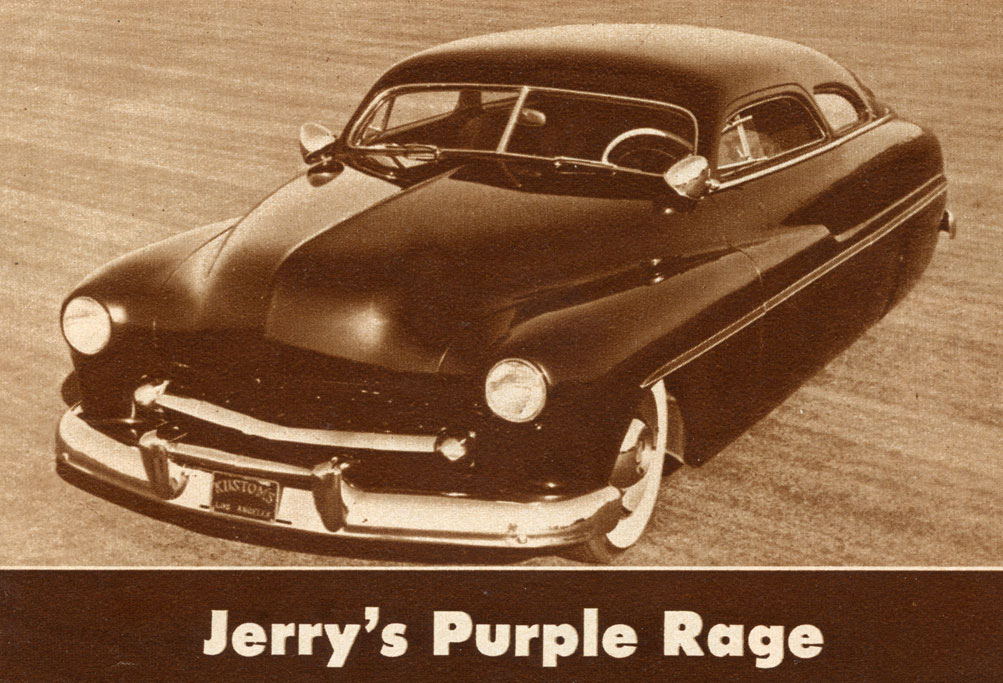
The wonderful sepia, dark blue or dark green printed pages almost appear like duo-tones. In Art-School I had experimented a bit with Duo-tones, which is a printing technique where an image is built up from two colors, usually black or a very dark color and mid to light toned color to give extra depth. At first I thought that those early magazine colored pages were actually printed in duo-tone. After Art-Shool I started to working at a graphic design agency and started to learn a bit about printing techniques. I had studied the Spepia tones spreads in the magazines and soon found out that the printing technique was called Rotogravure printing. There is just one color used for the Rotogravure printing technique, but due to the very fine grid patter which is used on the printing cylinder it appears that there are more tones than just the color that was used used. The technique created an illusion of depth. The fine grid also makes the image look a lot smoother and sharper than regular printing techniques using just one color (black) back in the 1950’s.
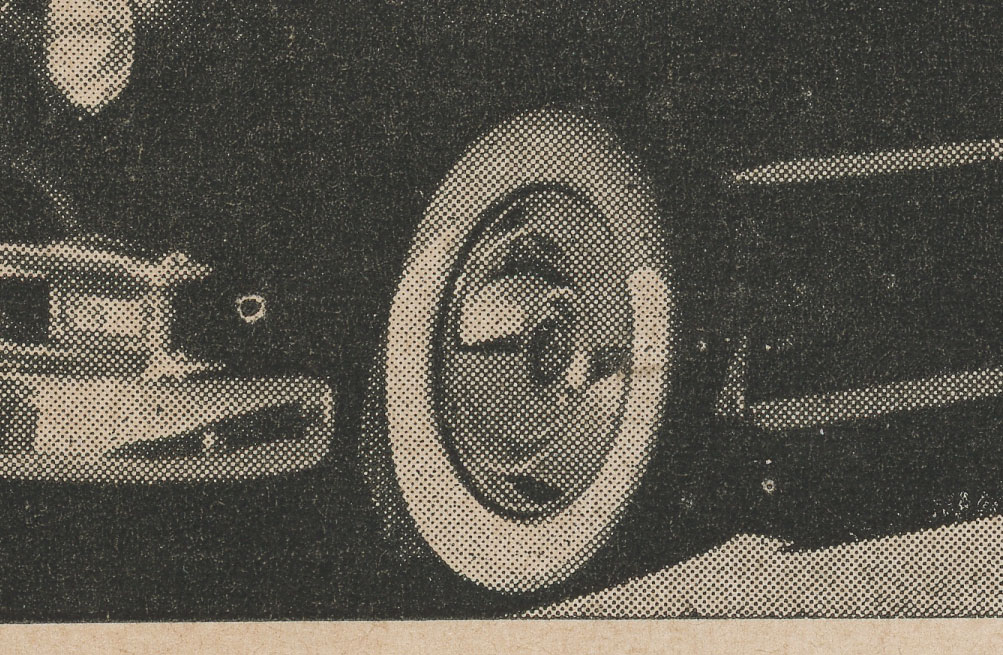
This example shows the difference between regular off-set printing in black (top image) and the rotogravure technique (image below) in a green toned ink. The images are scanned at the same percentage and show that the bottom image (rotogravure) has a lot more detail, and creates a much smoother image. The screen that could be used for this technique is a lot finer than the regular screen used for the black and white printing of the magazines. Modern techniques can even improve on this, but in the 1950’s this was about the best reproduction you could get in one color.

In short this is how it works.
The image, photo and text for a magazine page, is engraved on a printing cylinder, a very fine grid is used to create shades. Once the cylinder is engraved, this cylinder is placed in the printing machine, where is will be partially immersing the ink tray. The ink will fill the recessed sections of the engraved cylinder surface. When the cylinder is rotating in the printing machine the none engraved sections of the cylinder are scraped clean by an blade inside the machine. Now only the recessed sections contain ink. Most of the ink is concentrated in the sections that where the darkest in the original photo, and only very little ink is in sections were the original photo was very light. Next the paper will be pressed against the cylinder by a roller underneath it, and the ink gets transferred from the cylinder to the paper. The roller puts a lot of pressure to the paper making sure all the ink from the cylinder gets absorbed into the paper. This technique allows much more ink to be added to the paper than regular printing techniques. Hence the very deep tones in the darker sections of the photos. It almost appears that those sections are done in the color, and black was added to that. But the rotogravures that we know from these magazine are all done just in one single color. There for the rotogravure printed spreads have much more depth than the regular printed sections of the magazines. This all happens with a fast rotating printing machine.
The reason why only parts of the magazines were done using this technique is due to the high cost of creating the printing cylinders, making the start up cost considerably higher than regular printing. However in high volume printing, the end cost will go down per unit, due to the speed of these rotation printing machines. Only the well known magazines like Hot Rod, Hop Up, and Rod & Custom could afford using this technique. It created more attractive spreads which draw more readers and happy advertisers. But even though those titles were printed in high volumes it was not affordable to print the whole magazine using this technique.



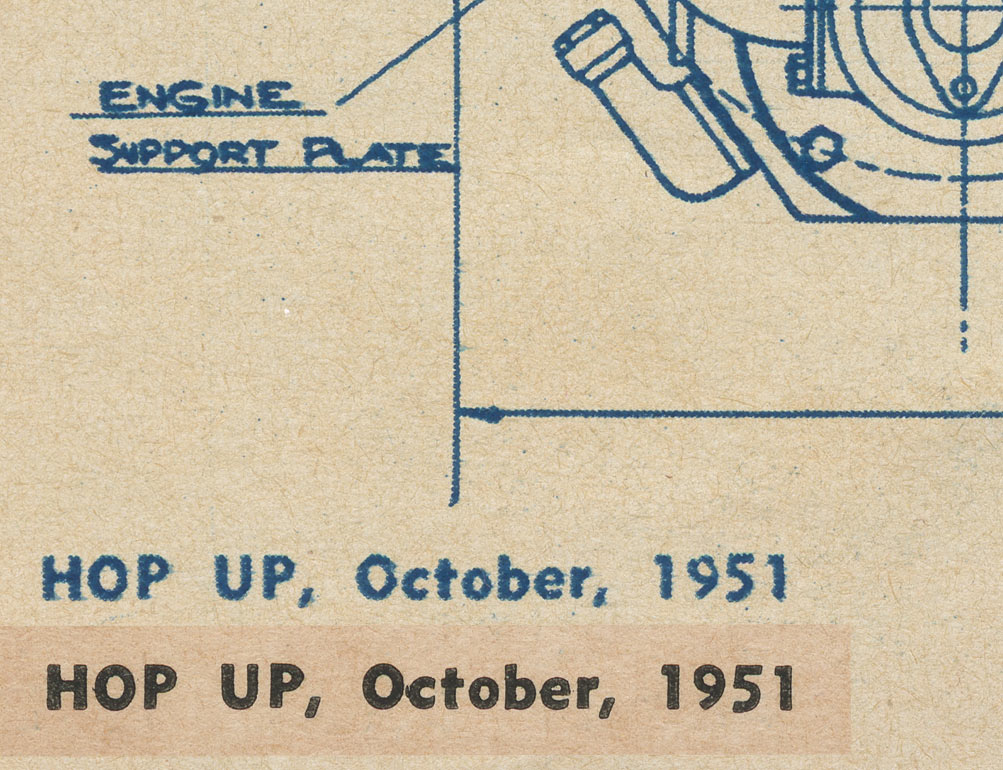 One of the disadvantages of the technique is that lines and text are made up from dots. Solid on the inside, but clearly visible as small dots on the outside. The sample above shows the main image done in rotogravure in blue. Everything is dotted in this image, while the Hop Up, October, 1951 in black, on the bottom, comes from a page of the magazine with regular printing. It shows that for text the regular printing is much cleaner and sharper.
One of the disadvantages of the technique is that lines and text are made up from dots. Solid on the inside, but clearly visible as small dots on the outside. The sample above shows the main image done in rotogravure in blue. Everything is dotted in this image, while the Hop Up, October, 1951 in black, on the bottom, comes from a page of the magazine with regular printing. It shows that for text the regular printing is much cleaner and sharper.
[divider]
In the Hot Rod and Custom Car magazines three ink tints were commonly used. Sepia was used the most followed by dark green and a few were done in blue tinted. This article shows some examples of these colors and how they created wonderful magazine spreads and amazing detailed photos. Other colors were used, but not often seen in these type of magazines. In fact today many magazines and books try to mimic these rotogravure colors when they show old photos of cars. And some enthusiast magazines like Magneto even used duo-tones to re-create the effect.
The green tinted Rotogravures
 This enlarged section shows the distictive grid pattern. This is produced on the prints by a screen etched on the printing cylinder. It makes it look like there are actually more shades of green in this image.
This enlarged section shows the distictive grid pattern. This is produced on the prints by a screen etched on the printing cylinder. It makes it look like there are actually more shades of green in this image.
[divider]
[divider]
The blue tinted Rotogravures
[divider]
The sepia tinted Rotogravures
[divider]
(advertisement)
[divider]
.
![]()


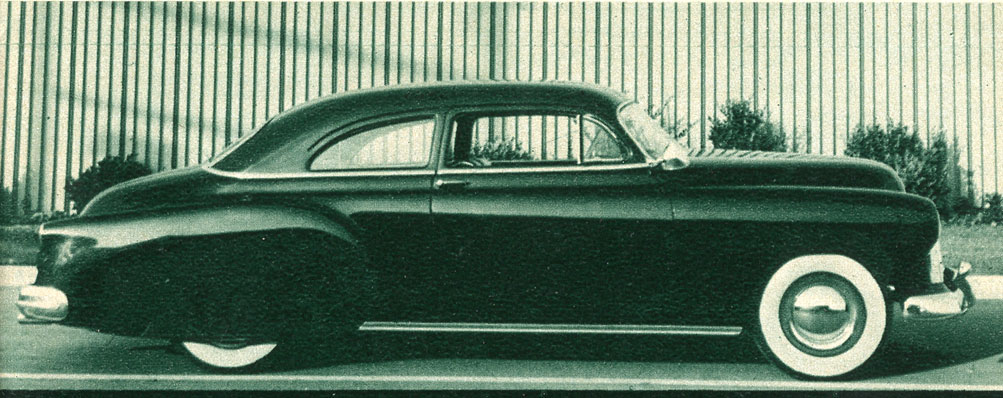

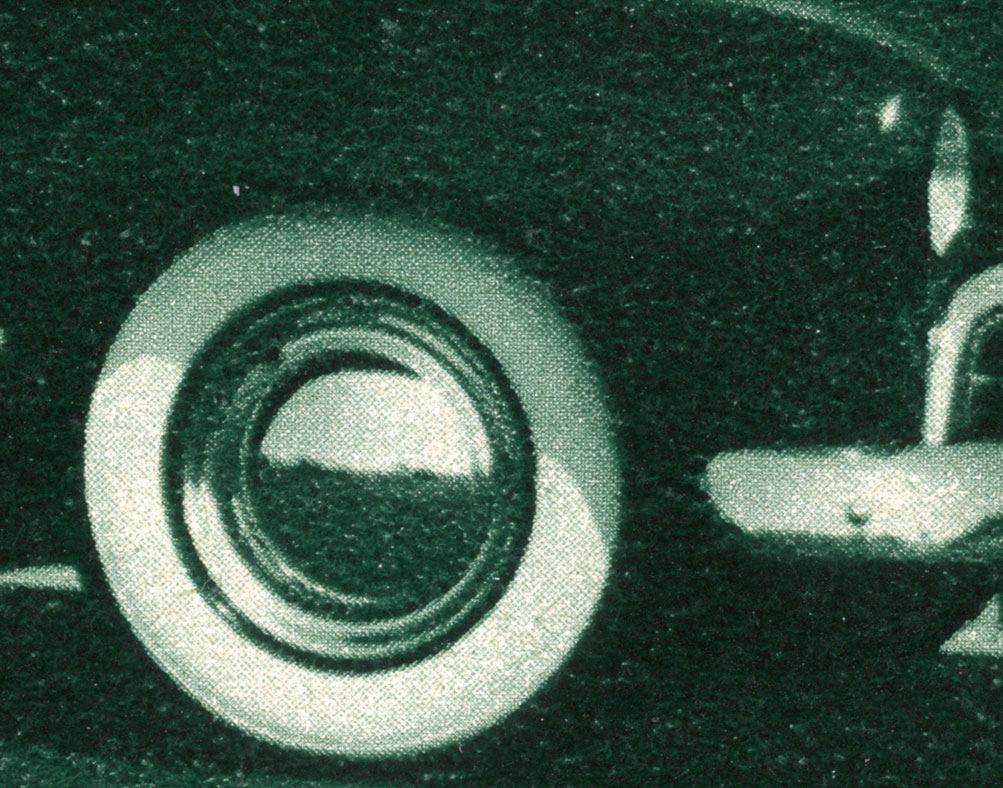

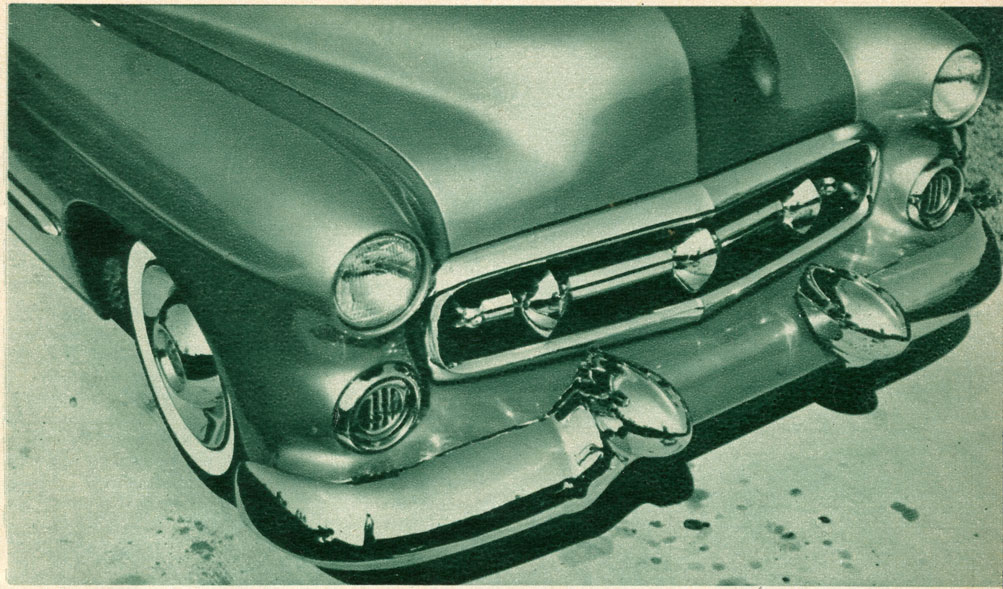
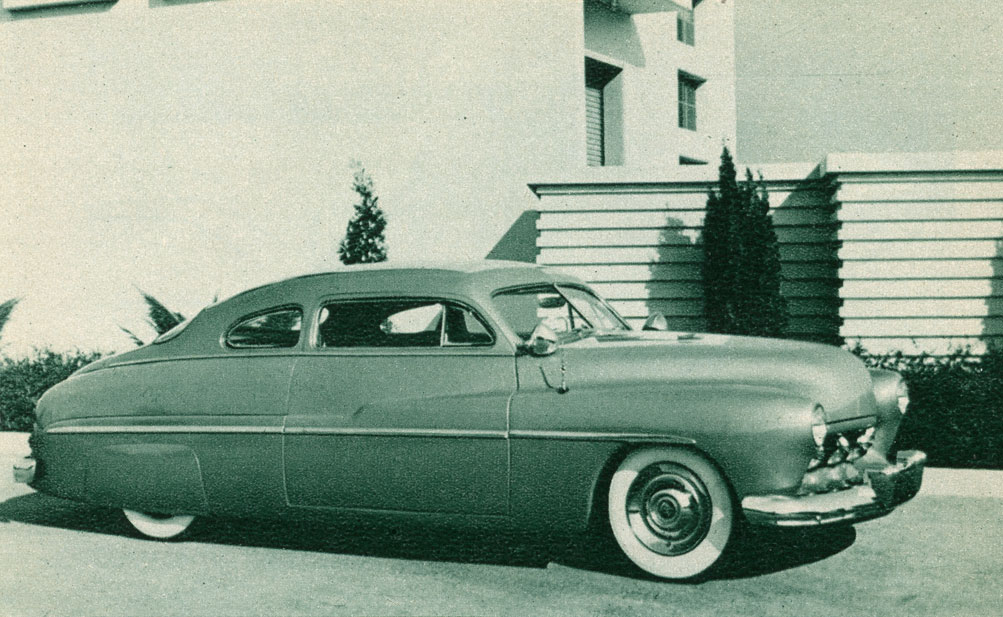
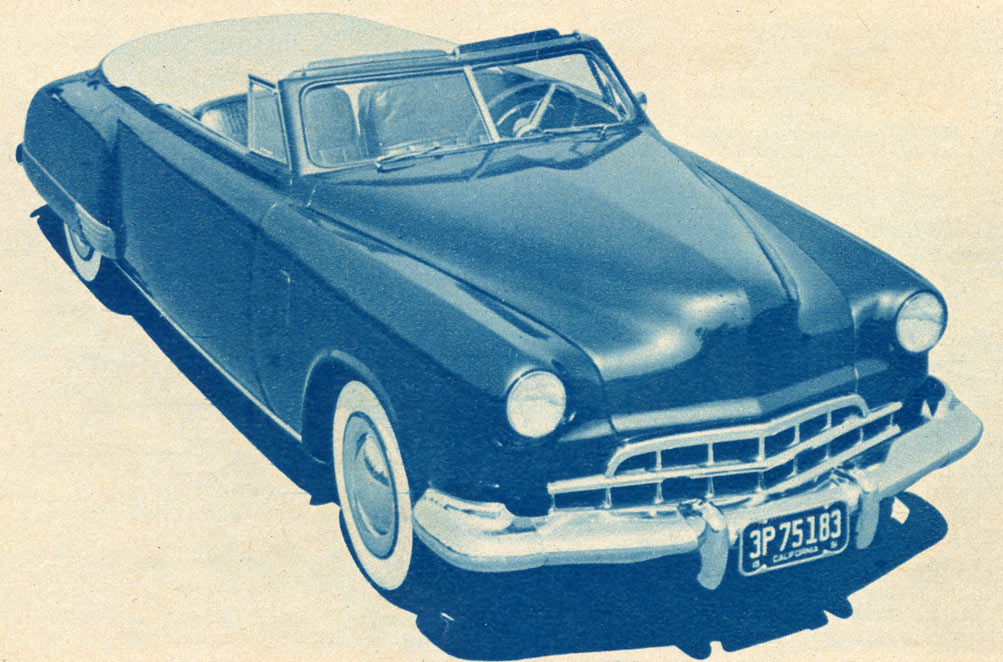



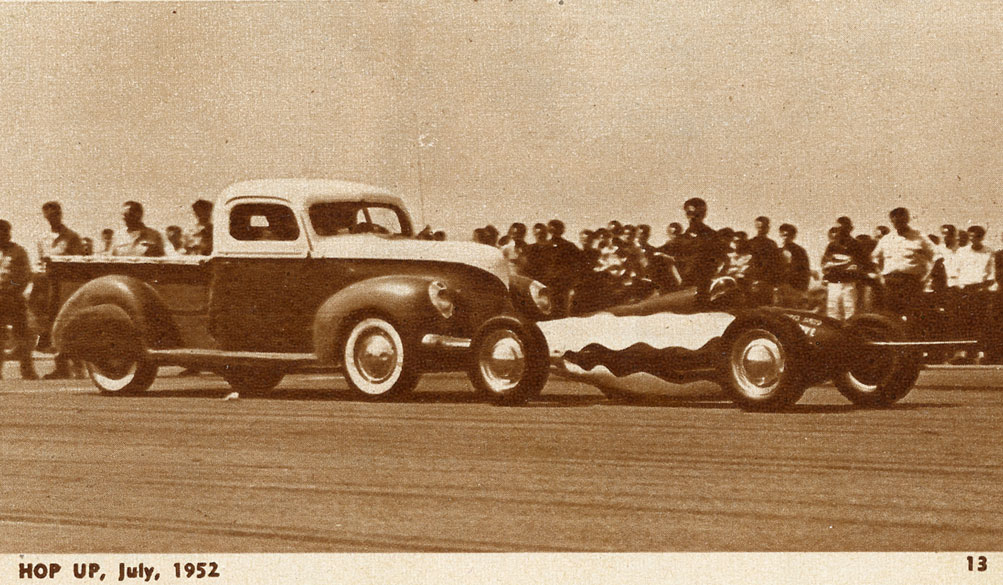
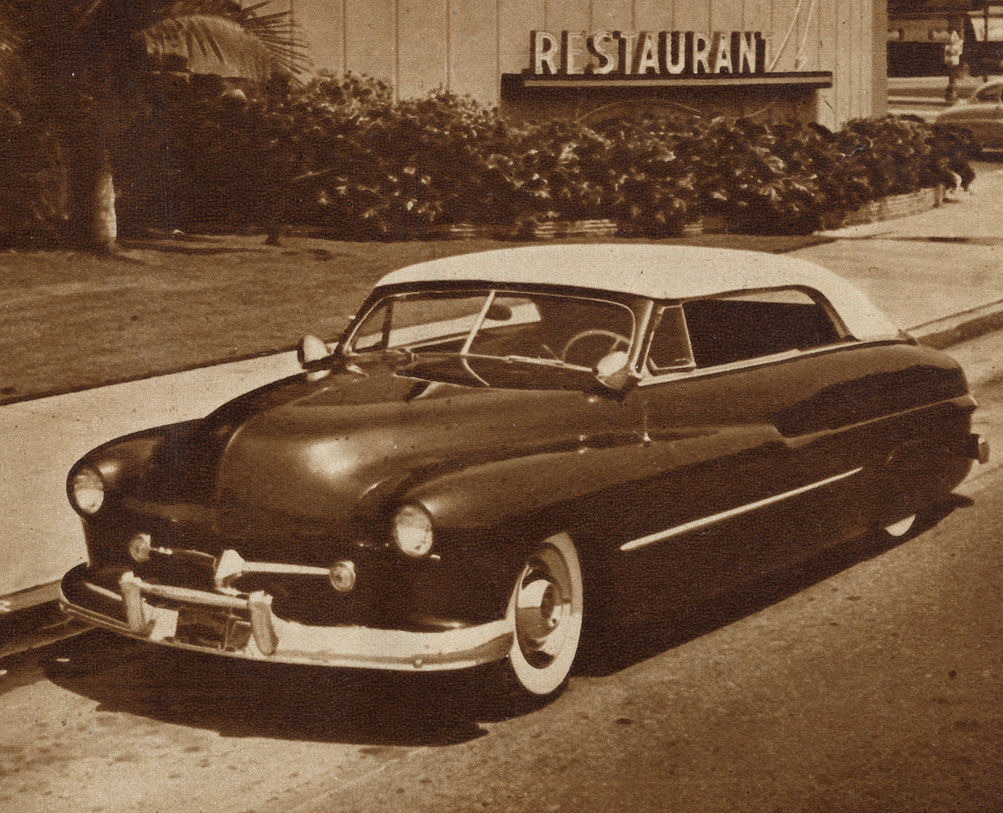
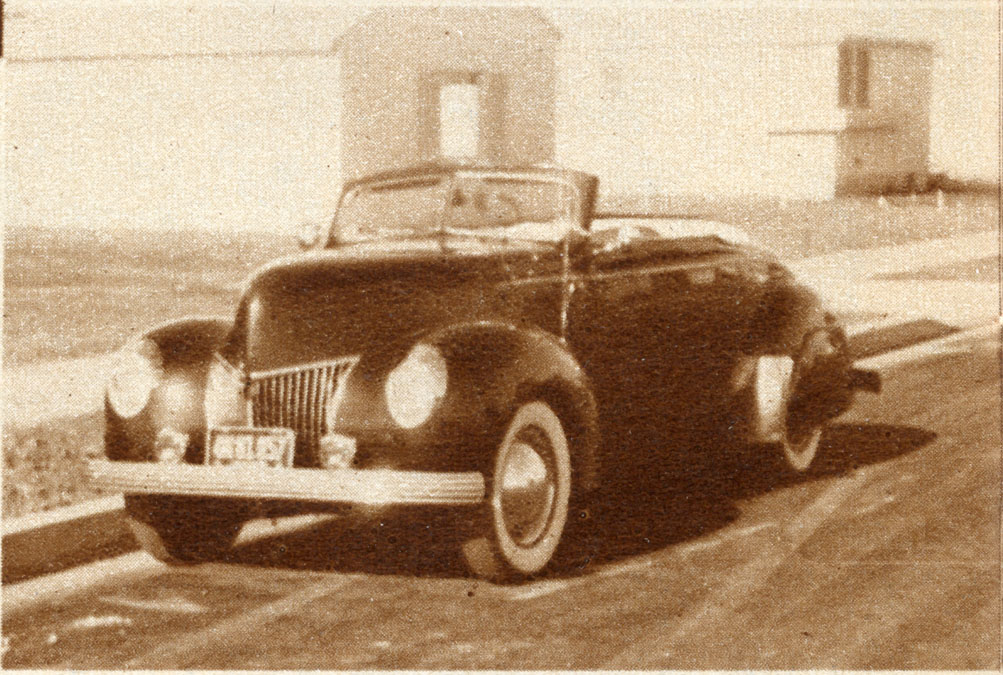
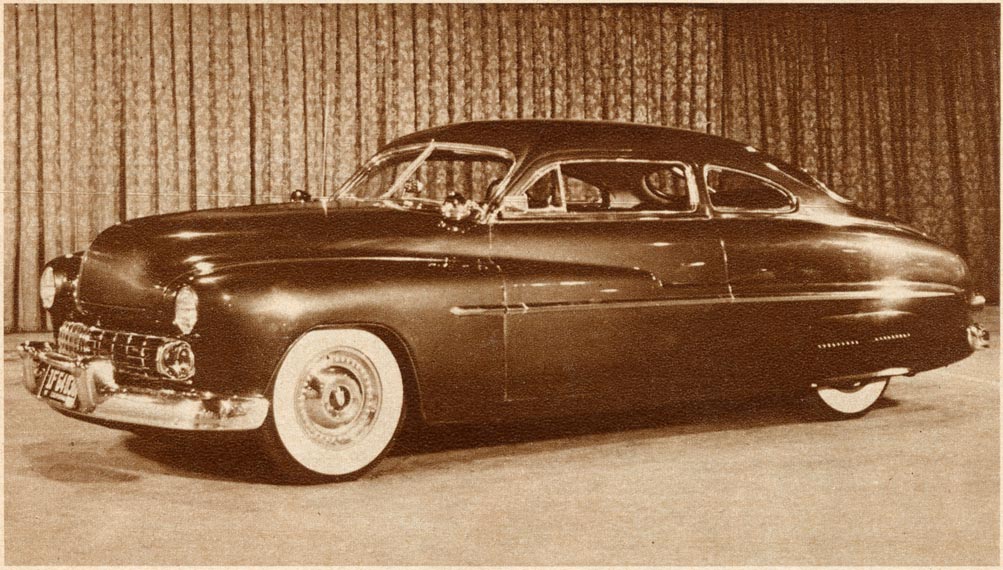



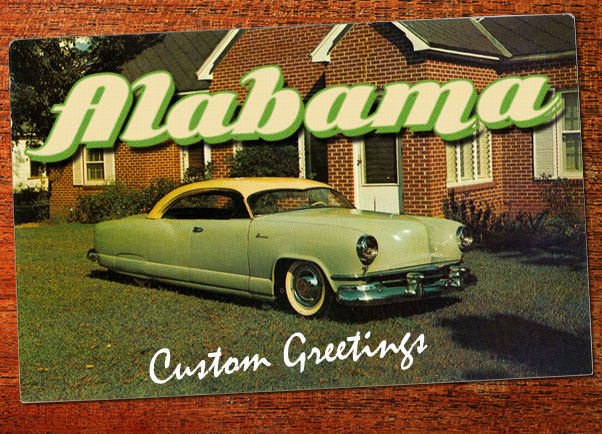
God I love this website. Thanks yet again Rik. Q
I too have long been a fan of the colour-toned images in the “little books”; to the point of trying to emulate them in my own personal digital images (for wallpapers and such). It’s just a look that screams ’50s to me. Thanks for adding this piece to the site Rik!
Dave
Thank you Rik for this explanation of what for me has always been a mystery. The Rotogravure pages were as much a part of the final image as were the modifications to the cars themselves.